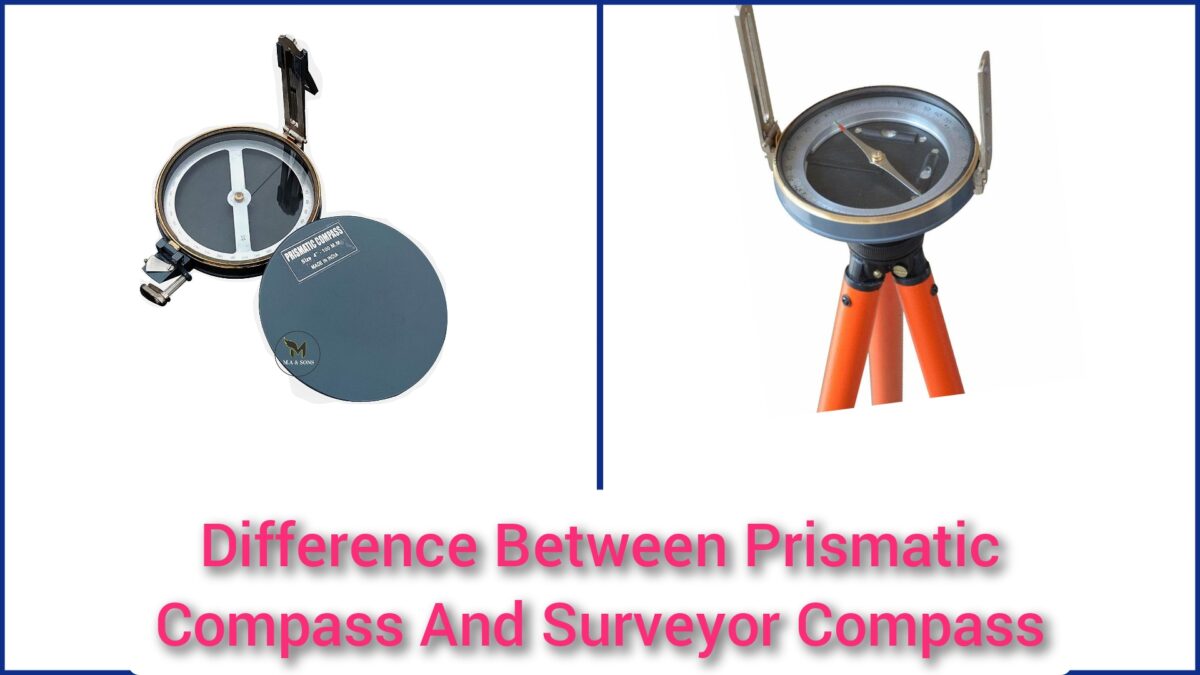In this article I will discuss difference between prismatic compass and surveyor compass.
When it comes to surveying, two commonly used instruments are the prismatic compass and the surveyor’s compass.
Despite their similarities in usage, there are significant differences in their construction and application.

A prismatic compass is a simple compass whose sighting system consists of a prism that allows the user to read the direction of the compass through a small window. This type of compass is suitable for rough survey work and for determining magnetic bearings. They are compact, easy to use and ideal for quick measurements in the field. However, their accuracy is limited compared to the Surveyor’s compass, and they can be affected by magnetic interference from nearby objects.
Surveyors compass is a more advanced survey device that is used for precise surveying work. It consists of a magnetic needle suspended in a box with a graduated circle around it, and also has a telescope for viewing. Surveyor’s compasses can measure horizontal angles accurately to within a few seconds of a degree, and they can also be used to measure vertical angles. They are more complex than prismatic compasses and require more training and skill to use effectively.
Difference between prismatic compass and surveyor compass is given in the table as given below.
| Prismatic Compass | Surveyors Compass |
|---|---|
| The graduation circle is attached to a broad-type needle, which means that it remains stationary and does not rotate with the line of sight. | The graduation circle is mounted on the box, which allows it to rotate with the line of sight. |
| At the viewing end, there is a prism present. | The viewing end does not contain a prism, but rather a simple slit. |
| It is possible to both sight and read at the same time. | It is not possible to sight and view at the same time. |
| The magnetic needle does not serve as an index. | The magnetic needle serves as an index during reading. |
| The markings on the measurement tool indicate directions using the whole circle bearing system. | The measurement increments are divided into four equal parts known as quadrants. |
| When graduations are marked in reverse, they can be read through a prism due to the nature of their reflection. | Graduations are typically displayed in a direct orientation and are not reversed. |
| A prism is used to measure the reading. | The measurement is obtained by observing directly through the upper glass. |
| The use of a tripod is optional, and the camera can also be held steady by hand. | The use of a tripod is recommended for optimal results when using it. |
